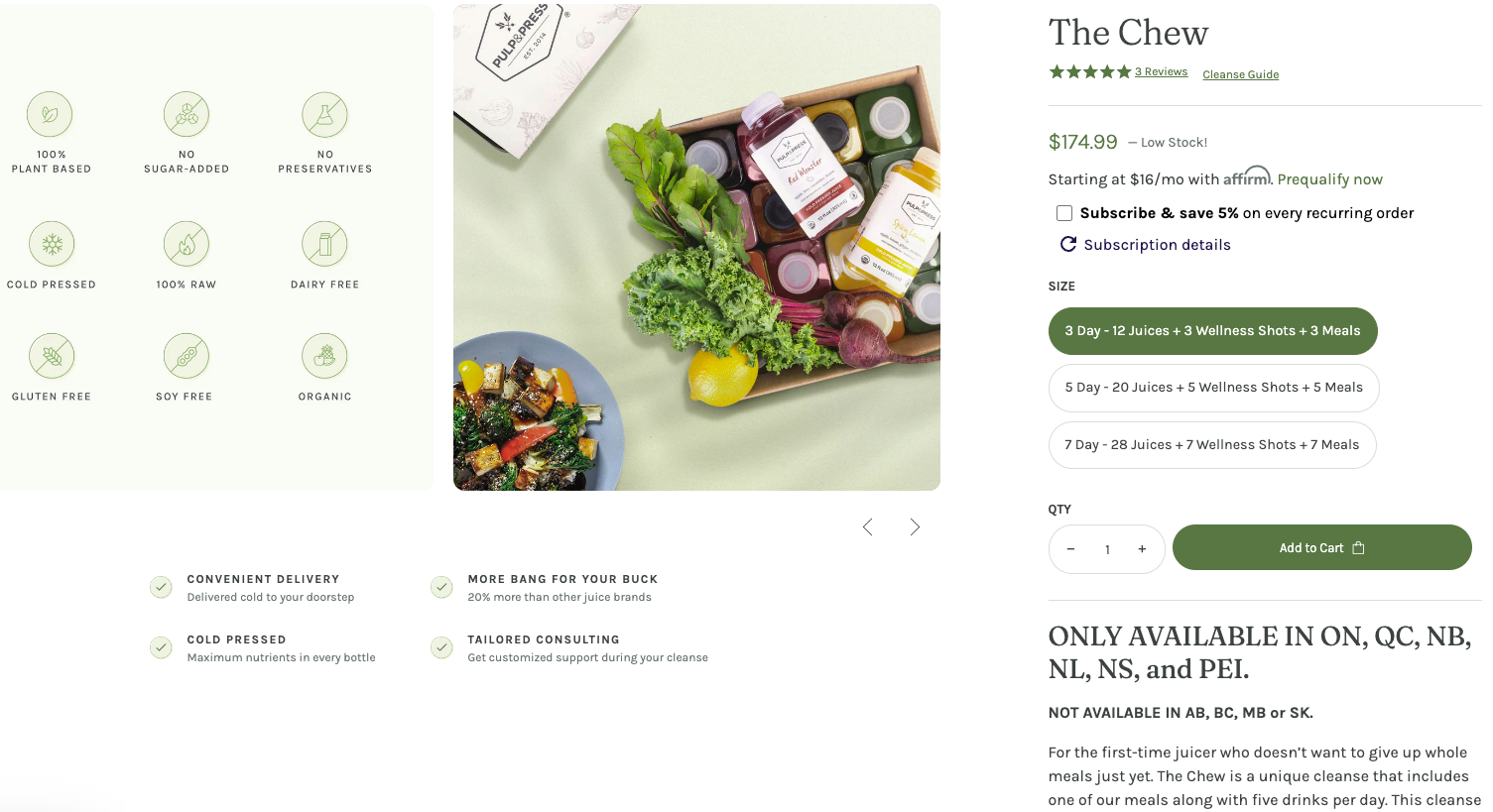The Inventory Crisis: How to Measure, Predict & Solve Inventory Issues for eCommerce Retailers
Need to Know
- There’s a perfect storm impacting retailer inventories.
- Retailers have shifted from just-in-time to just-in-case inventory management.
- Inventory ratios can help produce more accurate demand forecasts.
- Retailers can move stalled stock effectively by testing pricing and fulfillment strategies.
- Help consumers find the best-matched products nearby to delight them while reducing costs.
A Perfect Storm Challenging Retailers
There’s a perfect storm impacting retailer inventories. Pandemic shutdowns, safety restrictions, labour shortages, ambitious climate change targets, international business decisions, war, and political strife have impacted supply chains worldwide.
To circumvent unpredictable supply and address increasing stock replenishment costs (higher borrowing costs and inflation), retailers have shifted from just-in-time to just-in-case inventory management. Retailers must weigh the costs of growing their inventories, which eat into cash flows, versus risking stock-outs (empty shelves) of fast-moving products.
Trends Impacting Retailer Inventory
| Trending Circumstances | Impact |
|---|---|
| Supply challenges worldwide have led to persistent bottlenecks and unpredictable delays. | Retailers have shifted inventory management from just-in-time to just-in-case to guard against stockouts (stretching buying cycles, bringing goods in early and keeping them longer). |
| There's an increase in demand for and a reduction in the supply of warehouse space, and the real estate market remains extremely tight. | Warehousing costs are increasing significantly. |
| Consumers' spending habits are changing as inflation climbs | Retailers have an unexpected glut of inventory that's difficult to move. As big store merchants attempt to offload their stock, inventory demand shifts to discount retailers and liquidators. |
| Retailers have been reducing their store footprints (even before the pandemic), preferring more flexible lease options, and relying more on eCommerce. | Smaller stores lead to less in-store warehousing space, further impacting the strain on inventory management. |
Honing Your Inventory Process with Ratios
Retailers can hone their inventory management processes to improve their working capital.
Current Assets - Current Liabilities = Working Capital
Adding two essential (and straightforward) KPIs to your eCommerce dashboard will help retailers closely monitor inventory levels: inventory turnover ratio and days in inventory. The inventory turnover ratio measures how often products sell, requiring replenishment in a given period, or how often inventory turns over. The days in inventory ratio tracks how long cash is tied up in inventory daily.
Net Sales / Average Inventory at Selling Price = Inventory Turnover Ratio
Average Inventory at Selling Price / COGS x 365 = Days in Inventory
A higher inventory turnover ratio indicates a healthy business, while lower ratios suggest that stock isn’t moving fast enough. Slow-moving inventory leaves retailers cash-strapped, preventing them from investing in faster-moving products consumers desire. However, if your inventory ratio is too high, it can lead to empty shelves. Effectively managing inventory levels will help reduce the impact of erratic supply chains offering retailers a competitive advantage in uncertain markets.
Pulp & Press uses inventory ratios to deliver fresh products while avoiding stockouts.
"At Pulp & Press, we target sixty days in inventory. Our product has an expiration date of 150 days, which becomes our ceiling, while the floor is zero days or just in time. Our freight costs are expensive (fresh juice needs refrigeration), so we prefer to ship full truckloads rather than partial loads. So, we aim for the middle ground to ensure we don't stock out, can adapt to promotions and product changes, and allow time to compile full truckloads." - Andrew Fenn, Director, Finance & Operations, Pulp & Press Juice Company
Demand Forecasting with eCommerce Analytics
Your eCommerce analytics can help with demand forecasting by accessing historical inventory and sales data to predict future needs. You can enhance demand forecasting by adjusting purchase decisions to market trends and more significant marketplace activities while tracking your forecasting performance against real-time outcomes. Applying ABC analysis (a strategy of categorizing inventory) toward stock replenishment further enhances your ability to meet demand while minimizing costs.
ABC Analysis: An Inventory Replenishment Tactic
| A | Regularly counted and tightly controlled |
|---|---|
| B | Somewhat regularly counted and loosely controlled |
| C | Counted the least frequently and controlled loosely |
Pricing and Fulfillment Strategies to Reduce Inventory
Retailers can test pricing and fulfillment strategies through their eCommerce platforms to determine the most cost-effective means to move stalled inventory.
Bulk Pricing
Bulk pricing offers consumers price incentives to buy additional units.
Pulp & Press offers juice kits you can purchase or subscribe to annually. Learn more about how Northern has helped fine-tune Pulp & Press’ fulfillment.
Bundle Pricing
Retailers package different products together as one unit offered at a discount.
Pulp & Press bundles meal plans with juices. Learn how Northern helped Pulp & Press squeeze more conversions from email marketing.
Seasonal Pricing
Retailers offer sales incrementally earlier in the season. Retailers have even experienced success extending the selling periods of high-demand seasonal products (even offering them off-season) without discounting.
Canada Pooch uses a comprehensive paid media strategy to drive seasonal product sales.
Testing Shipping Terms against Discounts
Some consumers want to receive their purchases immediately and are willing to pay extra for predictable shipping terms (buy online, pick up in-store, next-day delivery, specific day and time deliveries).
MK Rittenhouse combines shipping incentives with hassle-free returns and interest-free payment terms to encourage first-time purchases.
Helping Customers Find Best Match Products Nearby
Using eCommerce AI and machine learning, your website can help consumers find the products they desire closest to them. To accomplish this, you can combine multiple strategies, for example.
By encouraging customers to buy online and pick up in-store (BOPIS), you can expedite the speed that consumers receive their products while saving shipping costs. Ensuring knowledgeable staff meet clients during pickup and encouraging customers to test for proper fit and expectations before leaving reduces product returns and creates satisfied customers. Consider integrating your POS with your eCommerce platform to streamline this process.
Tepperman’s offers shipping choices to win customers.
Syncing your POS with inventory across your locations (stores and warehouses) gives your staff real-time access to products wherever they are - combining this with multiple shipping options turns the in-store team into sales advisors your customers will cherish.
Adding product suggestions based on buying patterns, stock volumes and locations throughout the shopping journey helps consumers find the best-matched products nearby.
Homes Alive Pets uses numerous tactics, such as related products, to increase shopping cart conversions.
Adding consumer-generated product reviews (good and bad) helps consumers find their ideal products.
Evergreen Juices uses customer reviews to gain consumer trust during the purchase process.
Retargeting ads and remarketing workflows will continue helping consumers find your products after they've left your stores and website. Connecting your inventories to Google Shopping and popular marketplaces (Amazon, Walmart, Facebook, and Best Buy) exposes your products to larger markets, helping move stock faster.
West Coast Kids earned a Google Premier award for Northern’s extensive paid media campaigns, which included integrations with its inventory management system and Google Shopping.
Inventory Management Solutions
While numerous eCommerce platforms offer inventory management solutions, we have preferred partners.
- Adobe (inventory and order management, product recommendations, fulfillment)
- Shopify (managing inventory, point of sale)
- BigCommerce (inventory management, sell on marketplaces, sell in-store, shipping)
Other systems can integrate with your eCommerce platform and help mitigate supply issues.
- Salesforce (order management systems)
- LS Retail (point of sale, inventory management)
- Cin7 and DEAR (inventory management, order management, fulfillment, point of sale)
Supply-Chain Challenges Will Persist Beyond 2023
While many supply challenges have surfaced during the pandemic, most existed previously. These challenges won't get fixed through market corrections — you must begin building long-term solutions now. Retailers that mitigate supply challenges with eCommerce strategies that enhance their inventory management will make gains in their market, allowing them to thrive while others scramble. If you need help implementing these strategies, book a meeting with our Director of Commerce.
Stay informed, sign up for our newsletter.









